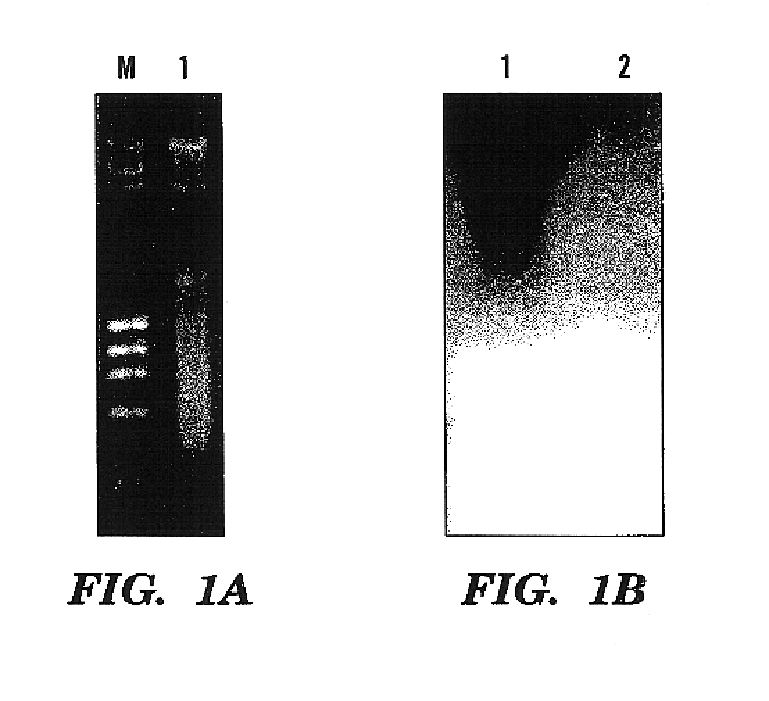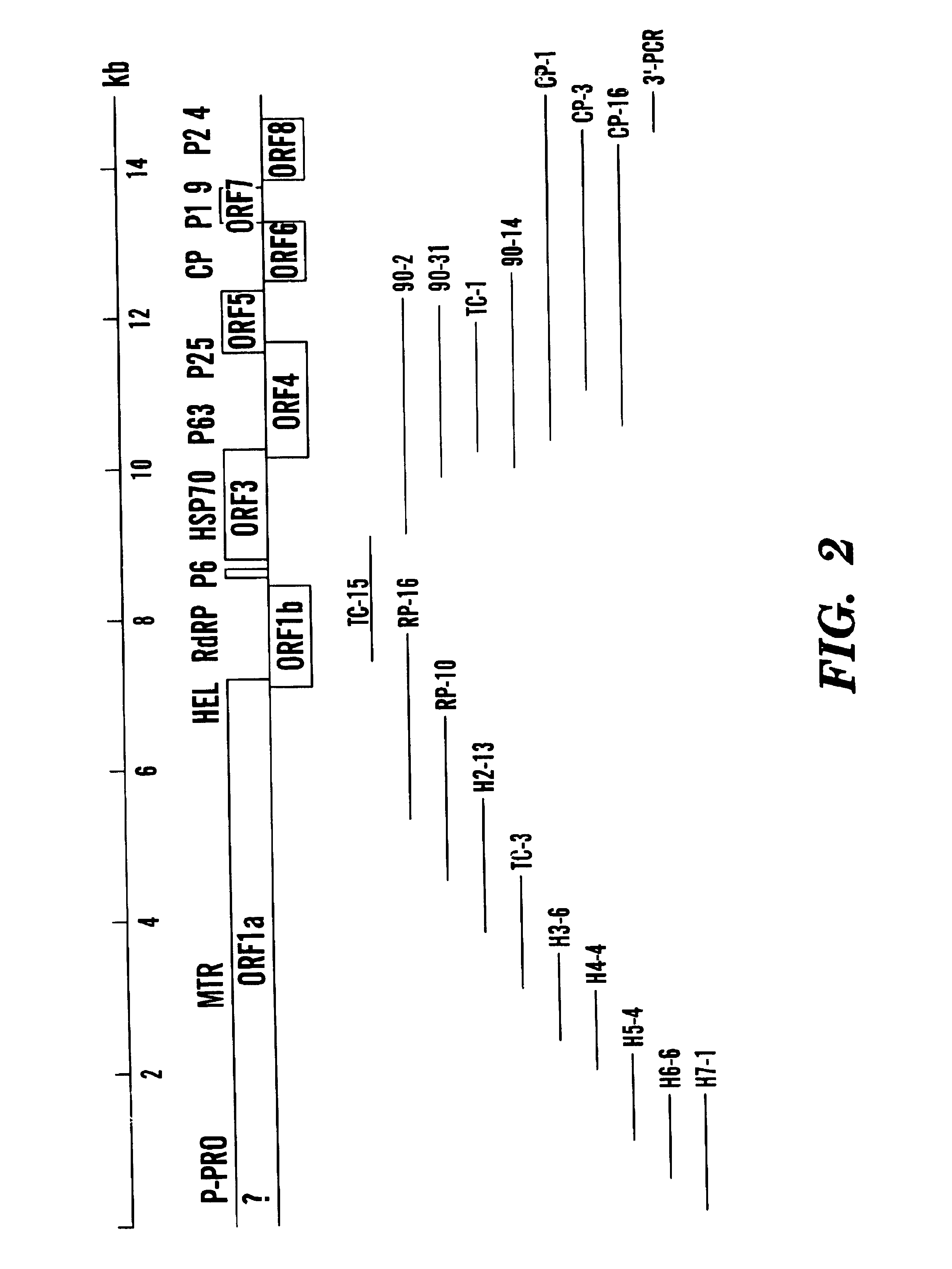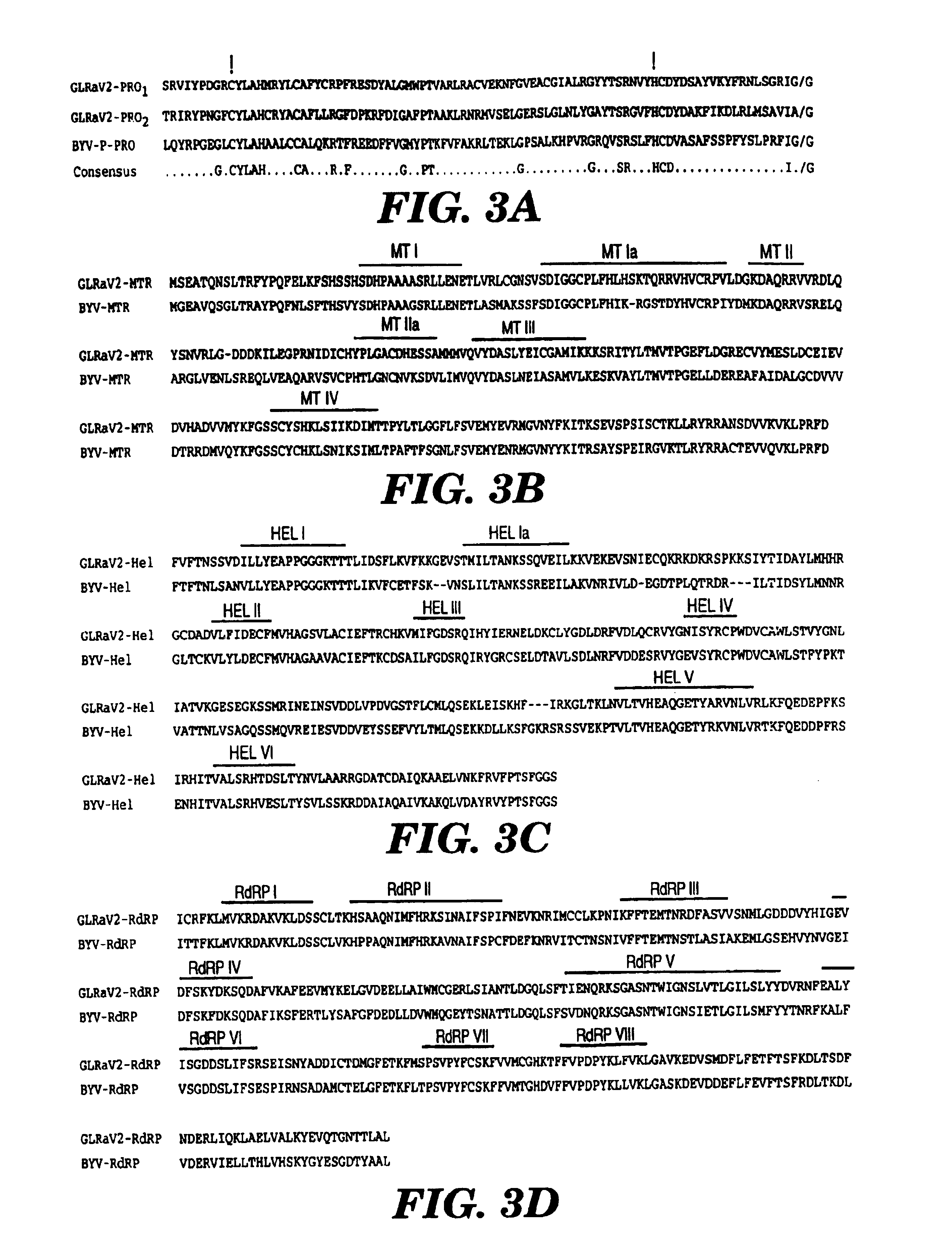Grapevine leafroll virus (type 2) proteins and their uses
a technology proteins, applied in the field of grapevine leafroll virus (type 2) proteins, can solve the problems of difficult traditional breeding for disease resistance, substantial loss of production, and inability to introduce a new cultivar
- Summary
- Abstract
- Description
- Claims
- Application Information
AI Technical Summary
Benefits of technology
Problems solved by technology
Method used
Image
Examples
example 1
Northern Hybridization
Specificity of the selected clones was confirmed by Northern hybridization. Northern hybridization was performed after electrophoresis of the dsRNA of GLRaV-2 in 1% agarose non-denaturing condition gel. The agarose gel was denatured by soaking in 50 mM NaOH containing 0.4 M NaCl for 30 min, and then neutralized with 0.1 M Tris-HCl (PH7.5) containing 0.5 M NaCl for another 30 min. RNA was sandwich blotted overnight onto Genescreen.TM. plus membrane (Dupont NEN Research Product) in 10.times.SSC buffer and hybridized as described by the manufacturer's instructions (DuPont, NEN).
example 2
Sequencing and Computer Assisted Nucleotide and Amino Acid Sequence Analysis
DNA inserts were sequenced in pBluescript SK+ by using T3 and T7 universal primers for the terminal region sequence and additional oligonucleotide primers designed according to the known sequence for the internal region sequence. Purification of plasmid DNA was performed by a modified mini alkaline-lysis / PEG precipitation procedure described by the manufacturer (Applied Biosystems, Inc.). Nucleotide sequencing was performed on both strands of cDNA by using ABI TaqDyeDeoxy Terminator Cycle Sequencing Kit (Applied Biosystems, Inc.). Automatic sequencing was performed on an ABI373 Automated Sequencer (Applied Biosystems, Inc.) at Cornell University, Geneva, N.Y.
The nucleotide sequences of GLRaV-2 were assembled and analyzed with the programs of EditSeq and SeqMan, respectively, of DNASTAR package (Madison, Wis.). Amino acid sequences deduced from nucleotide sequences and its encoding open reading frames were co...
example 3
Isolation of dsRNA
Several vines of GLRaV-2 infected Vitis vinifera cv Pinot Noir that originated from a central New York vineyard served as the source for dsRNA isolation and cDNA cloning. dsRNA was extracted from phloem tissue of infected grapevines according to the method described by Hu et al., "Characterization of Closterovirus-Like Particles Associated with Grapevine Leafroll Disease," J. Phytopathology 128:1-14 (1990), which is hereby incorporated by reference. Purification of the high molecular weight dsRNA (ca 15 kb) was carried out by electrophoretic separation of the total dsRNA on a 0.7% low melting point agarose gel and extraction by phenol / chloroform following the method described by Sambrook et al., Molecular Cloning: A Laboratory Manual, 2nd ed., Cold Spring Harbor Laboratory Press, New York (1989), which is hereby incorporated by reference. Concentration of dsRNA was estimated with UV fluorescent density of an ethidium bromide stained dsRNA band in comparison with a ...
PUM
| Property | Measurement | Unit |
|---|---|---|
| length | aaaaa | aaaaa |
| particle length | aaaaa | aaaaa |
| particle length | aaaaa | aaaaa |
Abstract
Description
Claims
Application Information
 Login to View More
Login to View More - R&D
- Intellectual Property
- Life Sciences
- Materials
- Tech Scout
- Unparalleled Data Quality
- Higher Quality Content
- 60% Fewer Hallucinations
Browse by: Latest US Patents, China's latest patents, Technical Efficacy Thesaurus, Application Domain, Technology Topic, Popular Technical Reports.
© 2025 PatSnap. All rights reserved.Legal|Privacy policy|Modern Slavery Act Transparency Statement|Sitemap|About US| Contact US: help@patsnap.com



